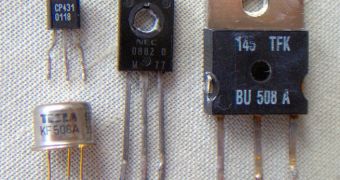Scientists in the United States announce the development of a new type of electromechanical switches, that have twice the heat resistance of conventional electronic transistors.
This means that the EMS can survive in the scorching temperatures that form in the wake of a jet engine, or perhaps even on the Sun-facing side of planet Mercury, where temperature levels can reach 427 degrees Celsius.
The new switches, which are a critical part of any electronic circuit, have been developed by a team of investigators at the Case Western Reserve University (CWRU).
In charge of the research group that created the EMS were experts Te-Hao Lee, Swarup Bhunia and Mehran Mehregany. Details of their work appear in last month's issue of the top journal Science.
English inventor Charles Babbage laid the groundwork for the new achievement back in the 1830s, when he developed a machine capable of calculating mathematical tables, that was driven by Steam.
In order to produce EMS that were sufficiently small to fit inside today's computers, the CWRU group turned to nanotechnology for help. A nanometer is the billionth part of a meter.
Their switches were configured inside an inverter, and then subjected to temperatures exceeding 500 degrees Celsius. The team was surprised to observe the devices kept on functioning.
“They work because they’re mechanical and made of silicon carbide, which is robust at high temperatures,” explains Bhunia.
“The switches operate in high heat and radiation, at lower voltage and higher density and perform better than transistors designed to operate in high heat,” the scientist adds.
One advantage that transistors continue to have over EMS is the fact that they have no moving parts. But this bonus is lost at temperatures exceeding 250 degrees Celsius.
When subjected to intense heat, transistors begin to shed electrons, thus undermining the reliability of the electrical current that is used to move data around in a computer.
In order to produce the new switches, the CWRU crew used silicon carbide as a substrate. They then employed a technique known as electron beam lithography to etch the EMS onto their surface.
Sulfur hexafluoride gas was used as the active agent in the process. The end result was an electromechanical switch that was capable of withstanding massive temperatures.
“We made a building block. Next, we’re trying to make memory. If we can combine them, we can build a computer,” Bhunia concludes.
The US Defense Advanced Research Projects Agency (DARPA) funded the new investigation.

 14 DAY TRIAL //
14 DAY TRIAL //